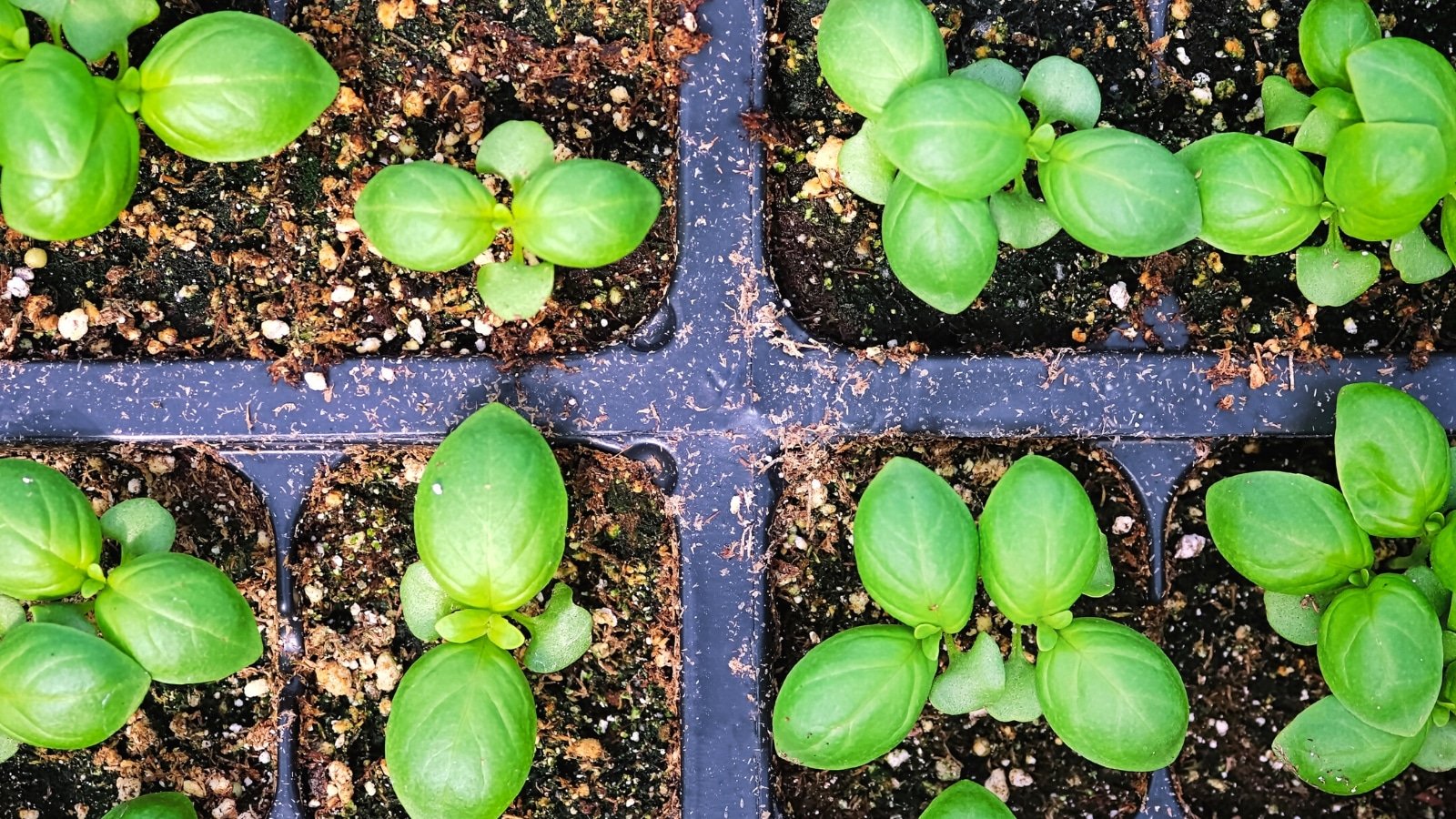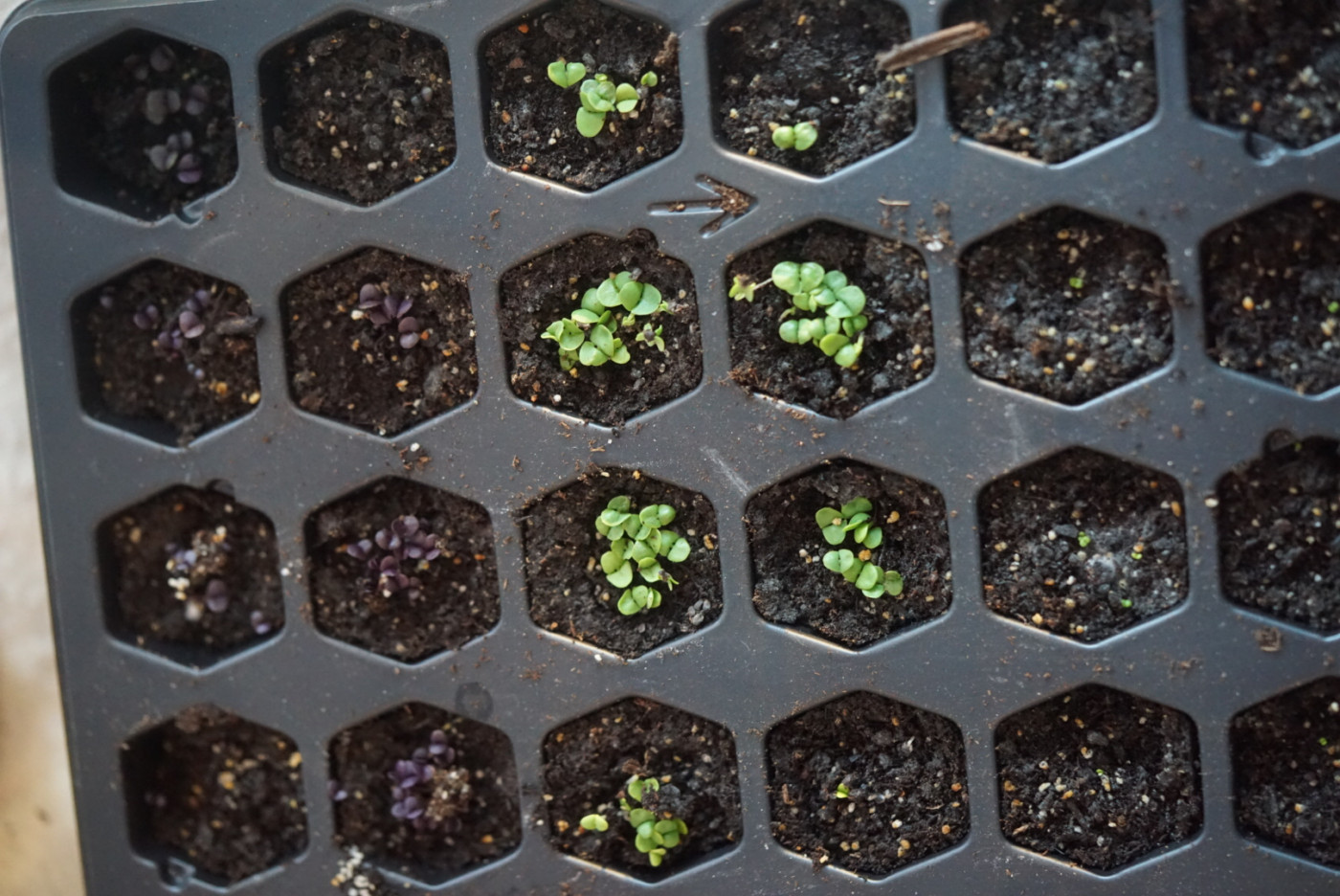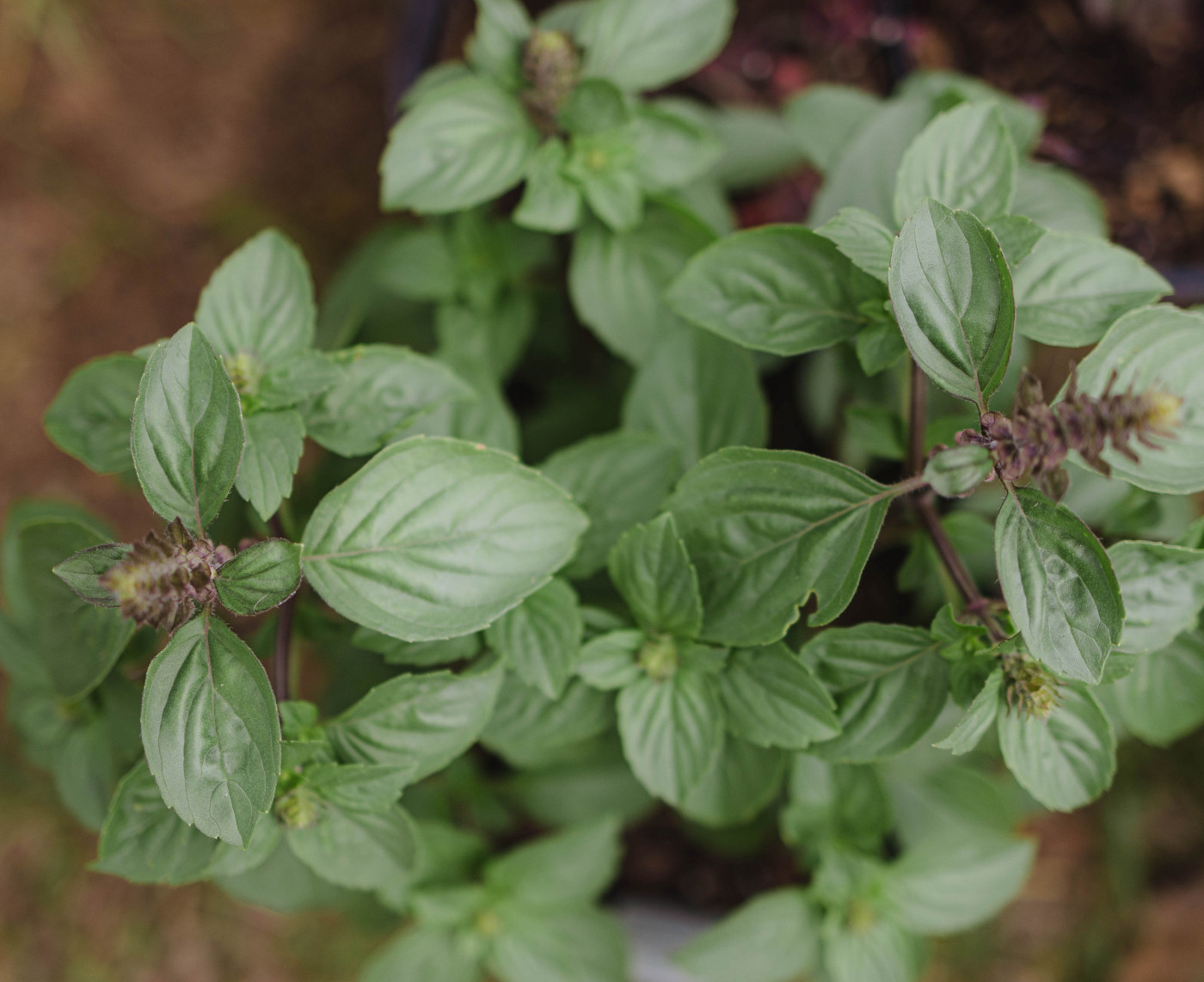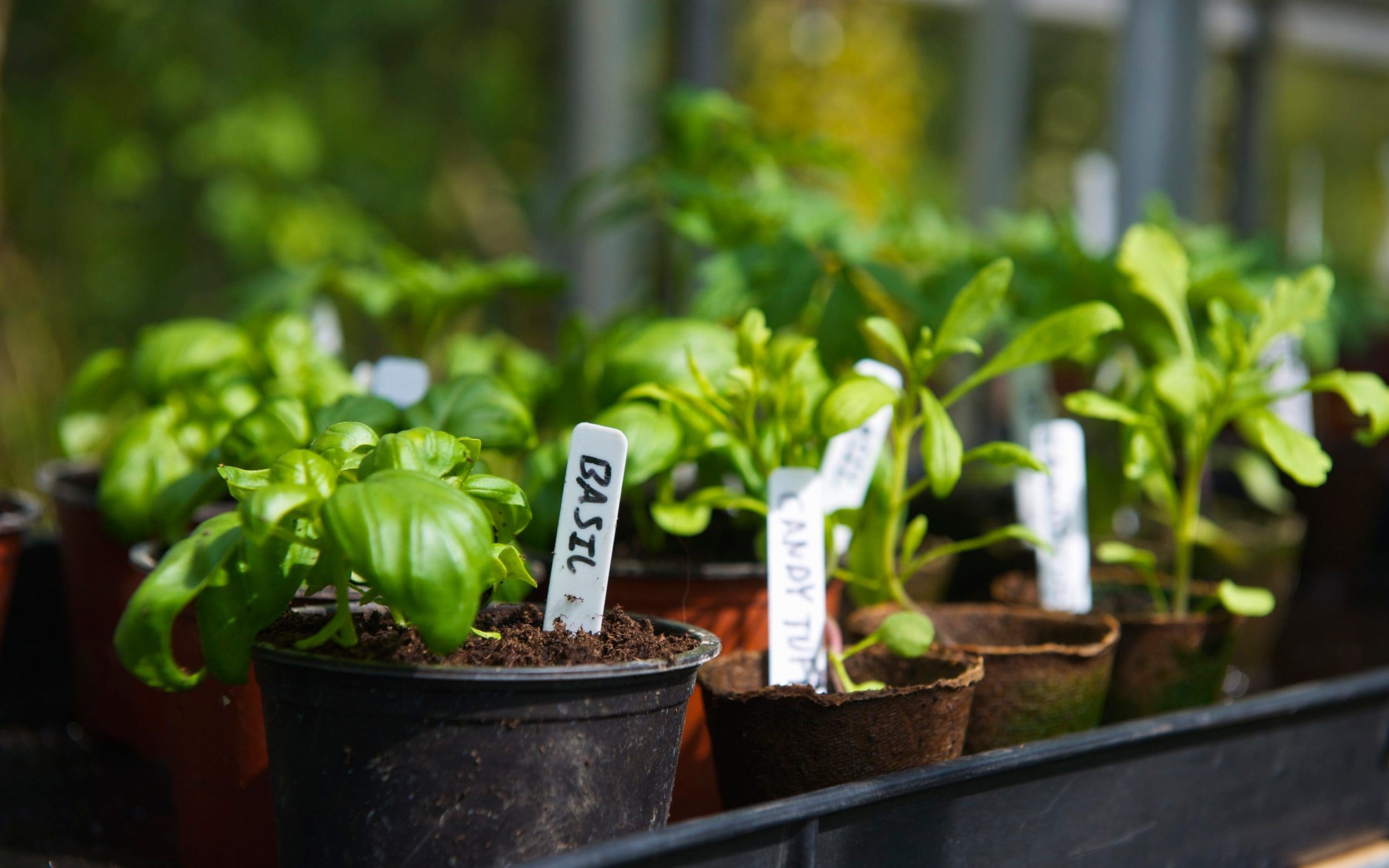Introduction: The Fragrant Journey of Basil
Basil, with its sweet and slightly spicy aroma, is a culinary herb that adds depth and freshness to countless dishes. From classic Italian pasta to vibrant Thai curries, basil is a versatile ingredient that elevates flavors with just a few torn leaves. Growing basil at home not only ensures a steady supply of this fragrant herb but also brings a touch of greenery and joy to your living space. This comprehensive guide, “From Seed to Harvest: A Guide to Growing Basil at Home,” will take you through each step, from selecting the right seeds to enjoying the bountiful harvest.

Selecting Seeds: The Foundations of Flavor
The first step in your basil-growing adventure begins with choosing the right seeds. Basil comes in various types, each with distinct flavors and uses. Sweet basil, the most common variety, is perfect for pasta sauces and pesto. Thai basil, with its licorice notes, complements Southeast Asian cuisines, while lemon basil adds a zesty twist to salads and summer drinks. Research the different varieties available and choose according to your taste preferences and intended culinary use. Ensure you purchase seeds from a reputable source to guarantee quality and germination success.
Preparation: Nurturing the Soil
Before sowing, prepare the soil to provide the best environment for your basil seeds to thrive. Basil prefers well-draining, nutrient-rich soil with a pH between 6.0 and 7.5. If starting indoors, use a good quality seed-starting mix that’s light and airy to promote root growth. For outdoor beds, work in aged compost or organic matter to improve soil fertility and structure. Avoid heavy clay soils that can retain too much moisture, leading to root rot. Additionally, ensure the site receives at least six hours of sunlight daily as basil loves warmth and sunshine.

Sowing Seeds: Sprouting the Future
Once your soil is ready, sow basil seeds about 1/4 inch deep and 2 inches apart if planting directly in the garden bed. For indoor starts, use small pots or seed trays filled with the prepared seed-starting mix. Lightly cover the seeds with soil and gently water, being careful not to displace them. Basil seeds typically germinate within a week under warm conditions, ideally around 70°F (21°C). You can speed up the process by placing the trays on a heat mat designed for seed starting. Keep the soil moist but not soggy during this period.
Nurturing Growth: The Art of Care
As your basil seedlings emerge, they’ll need tender care to grow strong and healthy. Gradually increase their exposure to sunlight to avoid legginess. Water consistently, aiming to keep the top inch of soil moist. Basil dislikes wet feet, so ensure proper drainage to prevent root rot. Fertilize every two weeks with a balanced liquid fertilizer once the plants have a few sets of true leaves. Regular pruning, which involves pinching off the top set of leaves once the plant reaches about 6 inches tall, encourages bushier growth and prevents flowering, which can make the leaves bitter.

Controlling Pests and Diseases: A Watchful Eye
While basil is relatively pest-resistant, common issues include aphids, spider mites, and fungal diseases like damping-off. Regular inspection of your plants can catch problems early. For aphids and spider mites, a strong blast of water or insecticidal soap can be effective. To prevent fungal diseases, maintain good air circulation around your plants and avoid overhead watering. Prompt removal of infected plants or parts can also help prevent the spread.
Harvesting: Enjoying the Bounty
One of the joys of growing basil is the frequent harvesting, which not only provides a fresh supply for your kitchen but also stimulates further growth. Begin harvesting when the plant has several sets of mature leaves. Pinch off stems just above a pair of leaves to encourage branching. For the best flavor, harvest before the plant flowers. Basil can be harvested continuously throughout the growing season, ensuring a steady supply for all your culinary needs.

Preserving and Storing: Extending the Harvest
To preserve your basil harvest, consider making pesto, freezing the leaves in ice cube trays with olive oil, or drying them for later use. Fresh basil should be stored in the refrigerator wrapped in a damp paper towel and placed in a plastic bag. Alternatively, place stems in a jar of water on the counter, changing the water daily, to keep them fresh for a short period. Dried basil, though less aromatic than fresh, can be stored in an airtight container away from direct sunlight for several months.
Diversifying Varieties: Exploring Flavors and Uses
Basil comes in many varieties, each with its unique flavor profile and uses in the kitchen. Some popular types include:
- Sweet Basil: The most common type, it has a sweet, slightly peppery taste perfect for pasta sauces, pizzas, and pestos.
- Genovese Basil: A classic choice for pesto due to its large, fragrant leaves and intense flavor.
- Thai Basil: With a licorice-like flavor and purple stems, it’s ideal for Southeast Asian dishes such as curries and stir-fries.
- Lemon Basil: As the name suggests, this variety has a delightful lemony aroma and taste, great for adding a citrus twist to salads, dressings, and fish dishes.
- Holy Basil (Tulsi): Revered in Ayurvedic medicine, it has a spicy, slightly bitter flavor and is often used in teas or cooked dishes in Indian cuisine.
Growing these different varieties not only adds diversity to your garden but also expands your culinary horizons.
Companion Planting: Beneficial Relationships
Companion planting can enhance the health and productivity of your basil plants. Basil’s strong scent can deter some pests, making it a good neighbor for vegetables like tomatoes, peppers, and eggplants. It also pairs well with herbs like oregano, thyme, and rosemary, enhancing their collective flavors and repelling unwanted insects.
Additionally, basil is believed to improve the flavor of tomatoes when grown nearby. Just ensure there’s enough space between plants for proper airflow to minimize fungal diseases.

Conclusion: Cultivating Joy and Flavor
Growing basil at home is not only a practical way to access this flavorful herb but also a rewarding experience that connects you with nature. From selecting the right seeds to enjoying the harvest, each step is a testament to your nurturing efforts. Basil’s versatility in the kitchen and its ability to uplift any dish make it a must-have for home gardeners and cooking enthusiasts alike. With patience, care, and a little knowledge, you can transform your home into a basil paradise, enriching your meals and senses with every harvest.
